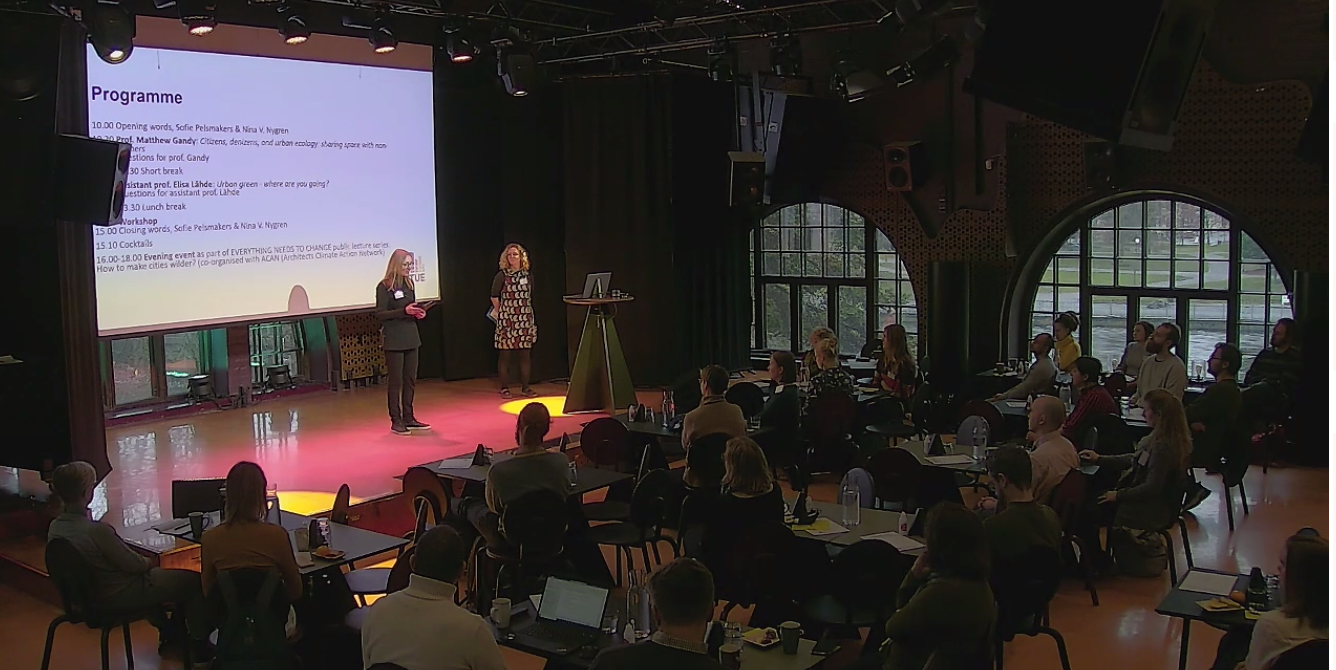Green urban spaces are crucially needed for our well-being, tackling biodiversity crisis, and building resilience to climate change. Some efforts for urban greening are taking place, but the scale is not sufficient yet.
As STUE board member, Associate Professor of Architecture Sofie Pelsmakers reminded us in her introduction to GREEN CITY seminar, we need restorative change that undoes the damage from both new and previous urban design developments that have caused negative social and environmental impacts. We need to turn the curve above neutral, into a positive impact.
There is no time to waste, since biodiversity loss is an irreversible change. As Nina V. Nygren, Postdoctoral Research Fellow specialized in e.g. nature conservation and urban animals pointed out: To halt biodiversity crisis, increased conservation efforts outside cities are not enough. We also need to change our consumption and production. This is very much a question for urban development.
So how should we approach this question and where can we go next? Two keynote speeches in our GREEN CITY seminar gave insights to use when moving forward.
Citizens, denizens, and urban ecology: sharing space with non-human others
We invited Matthew Gandy, Professor of Geography at University of Cambridge, to give insights based on his new book Natura urbana: ecological constellations in urban space. Gandy explored in his speech different facets to urban nature.
In his comprehensive overlook, Gandy introduced us four perspectives: systems-based approaches, observational paradigms, urban political ecology and what he terms the ecological pluriverse. With these approaches Gandy laid down interesting insights into our relationship with urban nature. The idea of ecological pluriverse offered a nuanced way to relate to non-humans. As Gandy explained, we should reflect on how we look at urban nature and when and why we intervene with its processes.
Urban green – where are you going?
Elisa Lähde, Assistant Professor of Architecture (landscape architecture) from Aalto University presented ways in which our (human) relationship to nature has affected urban planning in history and how it still affects today. Lähde has a wide experience in the field of sustainable urban planning and green infrastructure. In addition to finishing a PHD on co-creation and multifunctional green infrastructure, she has 17 years’ work experience in the field.
As Lähde explained, we humans are ecosystem engineers: animals that create, significantly modify, maintain and destroy habitats. In this sense we are like elephants and beavers, for example, only the effect of our actions is and has been usually a negative one. However, it’s good to remember that we are capable of creating positive change. For this, Lähde argued, it’s important to take different ecosystem information and ecosystem services (cultural, provisioning, regulating and maintenance) into account. She presented some interesting examples from landscape architecture in Helsinki, among for example a wetland in Vauhtitie and plans for Verkkosaari.


